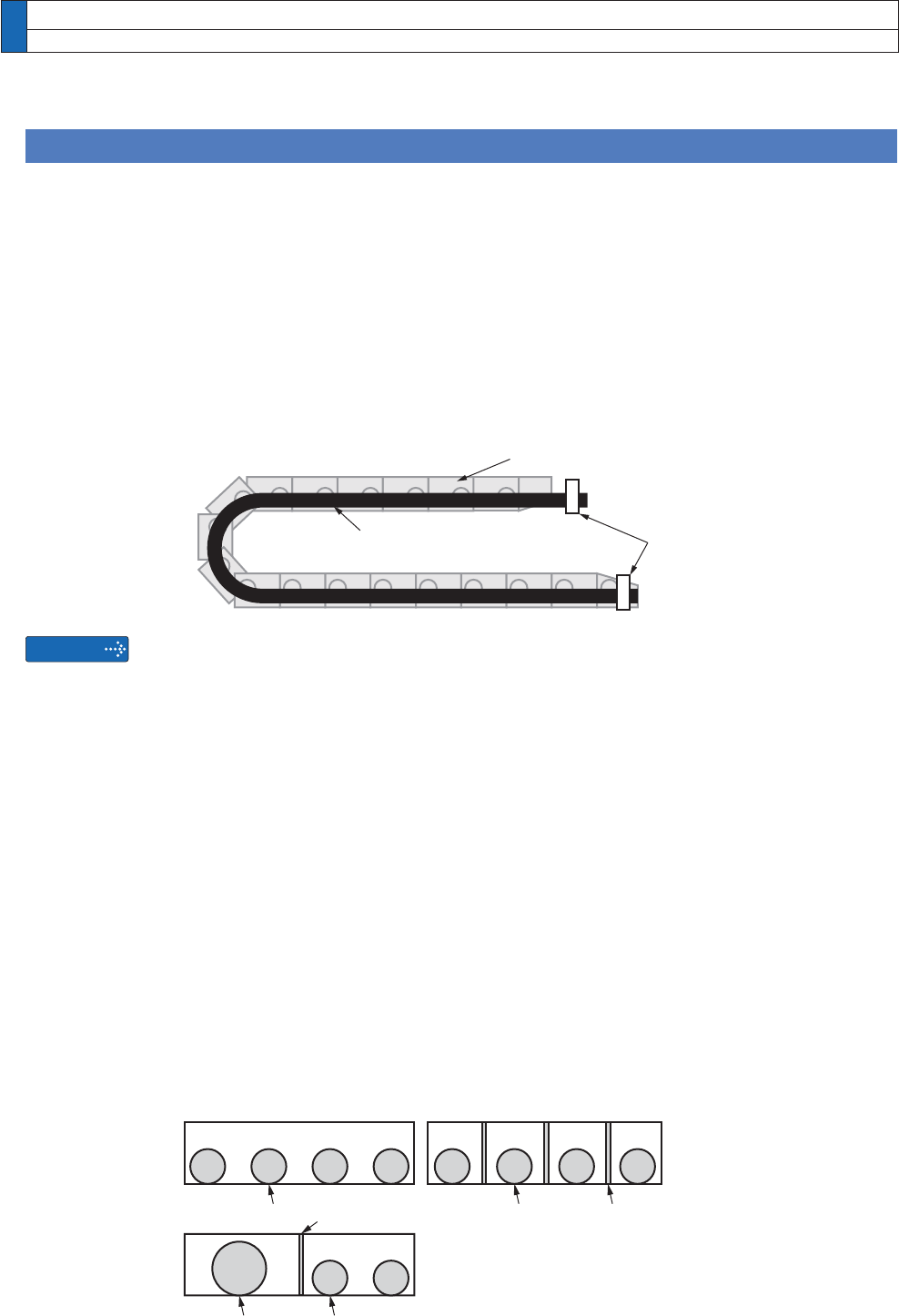
1-34
Wiring Precautions on Movable Section
When wiring cable bear, take the following precautions:
&DEOHEHDUZLULQJ
7KHEHQGUDGLXVRIWKHFDEOHPXVWEHWLPHVRUPRUHLWVÀQLVKRXWVLGHGLDPHWHU
)RUÀQLVKRXWVLGHGLDPHWHUUHIHUWR3+RZWR,QVWDOO´5HODWLRQVKLSEHWZHHQ:LUH
'LDPHWHUDQG3HUPLVVLEOH&XUUHQWµDQGDVVRFLDWHGWDEOHV
'RQRWÀ[RUEXQGOHZLUHVLQWKHFDEOHEHDU
:KHQVHFXULQJWKHFDEOHÀ[LWRQO\DWQRQPRYDEOHHQGVRIWKHFDEOHEHDUZKHUHWKH
cable is free from any stress (e.g. tension). (Avoid tight lock.)
[Recommended cable bear wiring]
Caution
Do not keep the cable loosened (too long) or under tension (too short).
Otherwise, the sheath will be cracked by internal wall of the cable bear, tangled by other
cable, etc., causing unpredictable troubles.
&DEOHGLVWRUWLRQ
Keep the cable free from twists or kinks.
Distorted cable will cause loose connection, lowering performance and reliability.
/DPLQDWLRQIDFWRURIFDEOHLQFDEOHEHDU
3ODFHFDEOHVRQDÁDWVXUIDFHLQSDUDOOHOZLWKRXWEULQJLQJWKHPLQWRFRQWDFWZLWKHDFK
other and measure the dimension necessary to cover these cables. Then select a ca-
ble bear which is wider than the measured dimension.
The lamination factor of cables should be lower than 60% (recommended factor is 30%
or below).
Do not run smaller and larger size cables in the same cable bear. Thin cables may
break under the pressure of thick cables. If it is necessary to mix cables of different
size, isolate them by using suitable separating material such as partition.
[Wiring arrangement in cable bear – example]
Cable
Cable bear
Cable end
Cable Cable Partition
Partition
Thick cable Thin cable
5. Installation
Motor


















